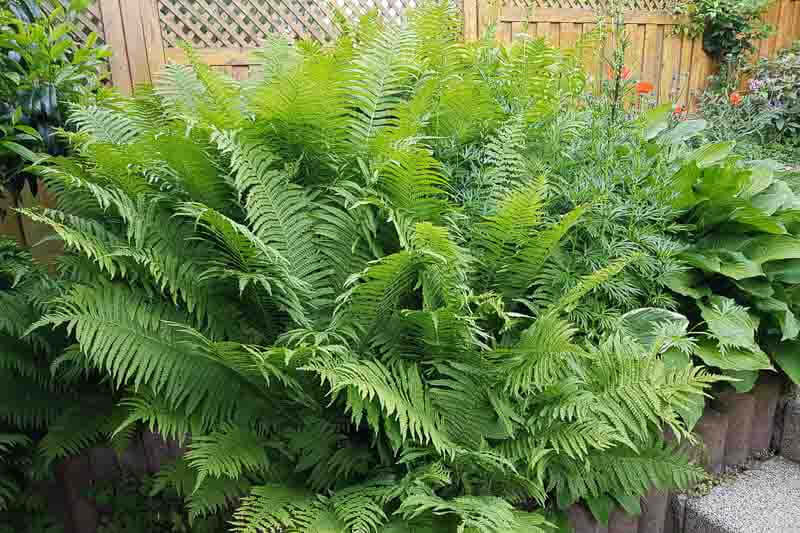Ostrich Fern: Tall and Lovely
It's an attractive dimorphic plant that gardeners use all year round to beautify their patches. In its nonfertile state, the plant grows to a height of 6 feet, the gorgeous fronds resembling ostrich plumes, hence the plant's name. In its fertile state, which occurs in the fall and early winter, the fern is much smaller. The shape is interesting, however, so it still provides pleasing shapes in a garden even if that shape does change.Are ostrich ferns invasive?
No, as a matter of fact Ostrich Ferns are a bio-indicator and absorb all types of soil pollutants like formaldhyde and arsenic from the soil.
The Different Phases of the Ostrich Fern
When it come out of dormancy, the fern is a rich, almost Kelly green, the arching fronds swooshing enticingly in the breeze. They offer quite a contrast with other blooming plants and serve as color anchors in a garden of flowers. They're hardy, too, so you can plant them nearly anywhere to beautify a particular place. Although they aren't green and sweeping in the winter, they're still attractive as they survive the cold and snow while the perennials are snoozing until the spring.Ostrich Fern: An Environmental Friend
First, the fern's extensive root system is a great soil stabilizer, and the other plants in the garden will benefit thereby because the fern's roots prevent erosion and nutrient loss in the soil. Second, they are a boon to various garden-dwelling wildlife. Several species of butterflies and beneficial insects rely on plants like the ostrich fern for shelter and as a place for egg laying and pupae maturation. Perhaps best of all, although the fiddleheads are a delicacy for people when cooked, animals don't like the taste of these ferns. So, you won't have to worry about rabbits, deer, and other woodland creatures venturing into the garden for a snack.The Serenity of the Ostrich Fern
Practitioners of feng shui rely on the fern to bring harmony to both a dwelling and the garden adjacent to it. The way it morphs back into a verdant, thriving plant after being so much smaller throughout the winter indicates a symbolism of new beginnings too.
Where To Buy Ostrich Ferns?
TN Nursery sells ostrich ferns and you can click the image to the right of this article to purchase yours.
Companion Plants For Ostrich Ferns
- Bloodroot
- Hosta
- White Trillium
